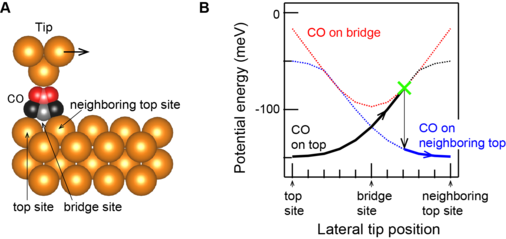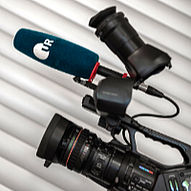Why Does It Get Hot When You Rub Things Together?
Unraveling the Mystery of Dynamic Friction at the Atomic Level
4 October 2023
Friction, an everyday phenomenon, has perplexed scientists for centuries. Though extensively researched, our understanding remains fragmented, primarily due to the multifaceted interactions that span across varying scales. Achieving an accurate grasp of the precise contact conditions between objects has been a longstanding challenge, a feat recently made possible through advancements in scanning probe microscopy.
Yet, even with these technological breakthroughs, the intricacies of dynamic friction – the force needed to maintain the movement of a molecule – have remained elusive. While scientists could measure static friction by moving a single molecule on a surface, both the measurement and theoretical understanding of dynamic friction have yet to be fully unveiled.
Now, writing in Physical Review Letters and Physical Review B, a collaborative team from Kanazawa University (Japan), the Donostia International Physics Center (Spain), and the University of Regensburg (Prof. Dr. Franz J. Giessibl, Chair of Quantum Nanoscience) report their groundbreaking study that dives deep into this challenge. They meticulously examined the manipulation of a carbon monoxide (CO) molecule on a single-crystal copper surface using an atomic force microscope. Backed by ab initio calculations, their findings shed light on:
• How the CO molecule positions relative to the microscope tip and surface.
• The relationship between the motion of the molecule induced by the tip, energy dissipation, and both static and dynamic friction.
"Friction can ultimately be traced back to the forces of atomic contacts between two rubbing bodies. As a model, one can imagine an egg in an egg carton, whose depressions represent the preferred places of an atom "rubbing" on it. However, the forces acting between atoms do not have such a simple nature as the forces to which an egg in an egg carton is subject. Rather, the nature of these forces is governed by quantum mechanics, and not by the simpler and much older classical mechanics. Professor Okabayashi and his colleagues have now found that when a carbon monoxide molecule is pushed across a metal surface, a mysterious bridge state is formed that can only be described by quantum mechanical calculations", explains Prof. Dr. Giessibl.
This research stands out for its unequivocal clarity on the friction process. Not only does it provide fresh insights into a long-studied phenomenon, but it also paves the way for future studies on energy dissipation relaxation processes.
Publications:
PHYSICAL REVIEW LETTERS
Norio Okabayashi, Thomas Frederiksen, Alexander Liebig, Franz J. Giessibl; „Dynamic Friction Unraveled by Observing an Unexpected Intermediate State in Controlled Molecular Manipulation”; 2023; Phys. Rev. Lett. 131, 148001
DOI: https://doi.org/10.1103/PhysRevLett.131.148001
https://journals.aps.org/prl/accepted/f5075Yc2N5e1d77db92d2f819acd0df5751856c19
PHYSICAL REVIEW B
Norio Okabayashi, Thomas Frederiksen, Alexander Liebig, Franz J. Giessibl, „Energy dissipation of a carbon monoxide molecule manipulated using a metallic tip on copper surfaces”; 2023, Phys. Rev. B 108, 165401
DOI: https://doi.org/10.1103/PhysRevB.108.165401
https://journals.aps.org/prb/accepted/70075O94N0114242039c12a631f9e8b39eaaabc16

Dynamic friction at an atomic level. (A) Illustration of the CO molecule being manipulated on a copper surface by a metal tip. (B) Changes in the CO molecule's adsorption states while the tip moves horizontally across the surface. The interaction energies between the tip and CO are represented by different lines: CO on the top site (black curve), on the bridge site (red curve), and on the neighboring top site (blue curve). As the tip progresses, the actual adsorption state of CO follows the solid lines. The transitions between different adsorption sites (green cross) provide key insights into the intricacies of dynamic friction. © 2023 Okabayashi, et al, Physical Review Letters and Physical Review B
Information/Contact
Prof. Dr. Franz J. Giessibl
Chair for Quantum Nanoscience
Institute of Experimental and Applied Physics
University of Regensburg
Phone +49 (0) 941 943‑2105
Mail: franz.giessibl@ur.de
http://www.physik.uni‑regensburg.de/forschung/giessibl




